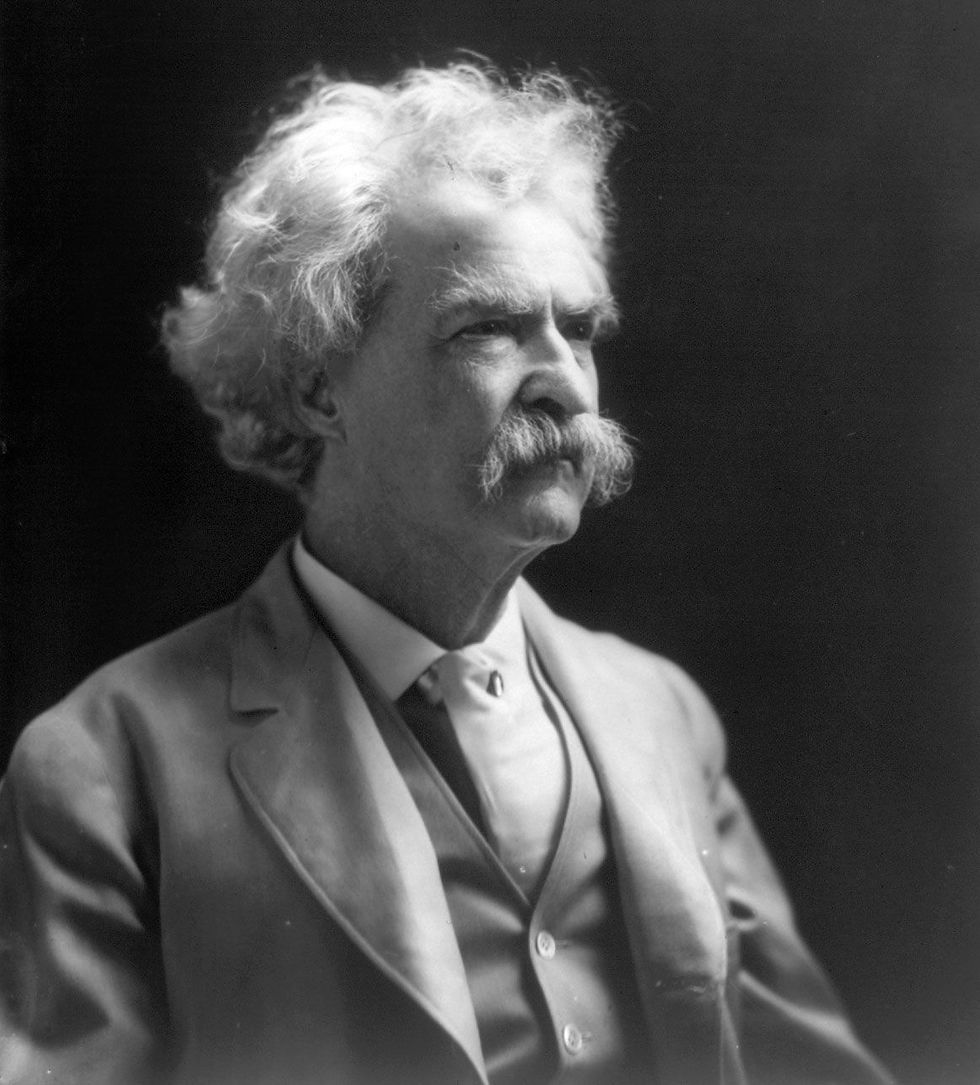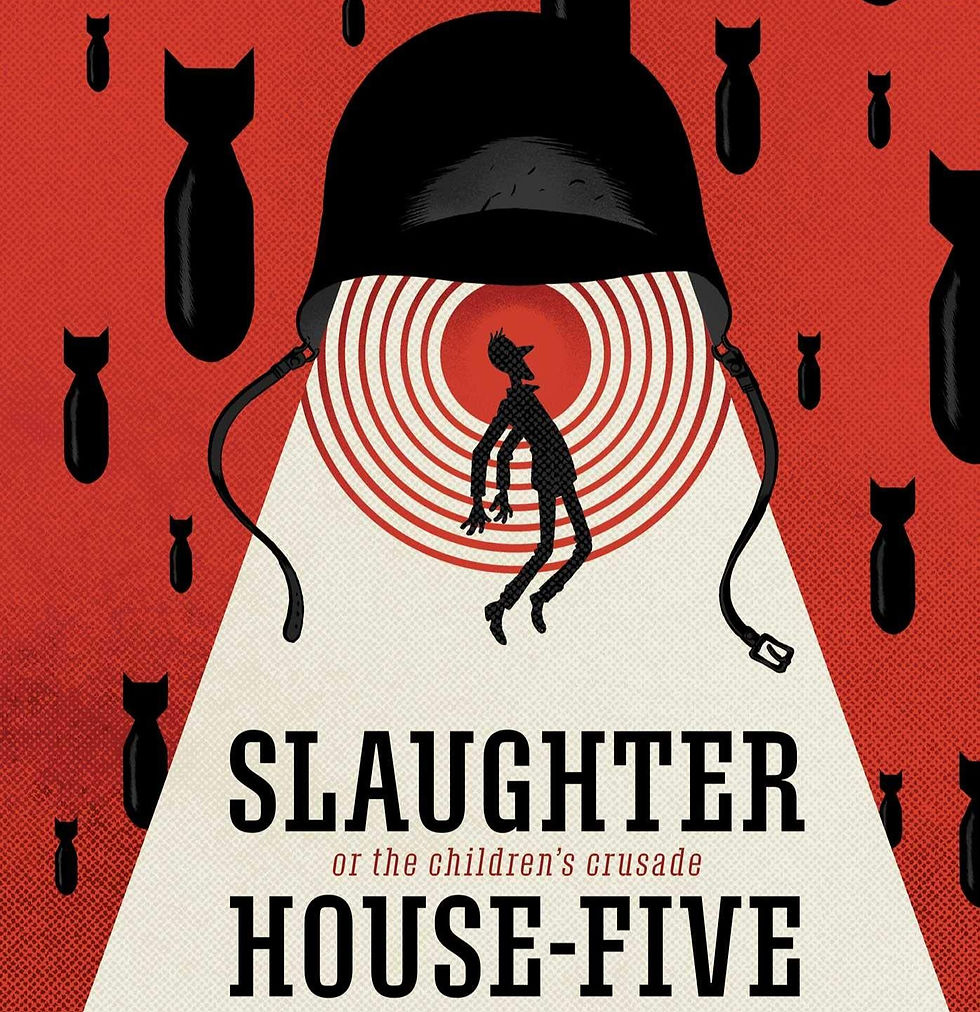Modern North American Literature Series: Introducing Modern North American Literature
Foreword
The series “Modern North American Literature Series” presents the major historical, social, economic, and, most importantly, literary events which unfolded within the United States of America, spanning from the 20th century up to the beginning of the 21st century. In contrast to previous phenomena, the 20th century entailed an extreme disruption of morality, ethics, and priorities that affected the rest of the world. This series attempts to assess how the North American literary scene engaged with the socio-political panorama that engorged the patriotic American sentiment of that time, which both World Wars and the Cold War largely contributed to fueling over the period. Furthermore, it will also attempt to analyze how literature became a means and medium to protest against social injustices such as racism, classism, and sexism. This analysis will involve the study and examination of literary movements and literary criticism that clearly influenced the evolution of American literature, resulting in a deep, outstanding, and long-lasting impact on the American sense of identity, only to see it shift further as the 21st century opened.
The North American Modern Literature Series consists of eight articles arranged in the following order:
Modern North American Literature Series: Introducing Modern North American Literature
Modern North American Literature Series: Socio-political Overview: Roots and Context
Modern North American Literature Series: Fundamental, Must-Read Works
Modern North American Literature Series: Genres and Themes, the Core Fabric
Modern North American Literature Series: Representation and Diversity - whose voices, for whom?
Modern North American Literature Series: American Literary Criticism and Theories
Modern North American Literature Series: Regionalism in Modern North American Literature
Modern North American Literature Series: The Legacy of Modern North American Literature
Modern North American Literature Series: Introducing Modern North American Literature
In the context of American history, the 19th century suggested an age of change and reunification. Once the Civil War concluded, Americans were instructed with creating a sole American identity, where the North and South played no role in promoting Americanism as the ultimate goal. To accomplish such a task, America sought to break all ties with its previous imperial ruler, Great Britain. Considering that “America’s imagination, such as it was, served the future, the individual, the dream of acquisition, and a commitment to indiscriminate mixing and leveling” (Conn, 1989, p. 242), the definition of the American individual surpassed politics and depended on social values and beliefs. Since independence had been achieved a century earlier, the artistic venue served as the intersection to divert from Britishness. Clearly, British authors and poets would still have a large impact on 20th-century literature, but authors such as Mark Twain would generally provide a different approach to the soon-to-emerge American novel and poetry.
With The Adventures of Huckleberry Finn (1884), the southern author Samuel Clemens, best known as Mark Twain, set on a journey to rediscover America from a unified glance. As Reed (2009) argues, “Twain takes the reader into the interiors of an age; he takes us into the minds of those who inhabit an age” (Reed, 2009, p. 384). In other words, Twain considers the political frame he is writing on; however, he delves into analyzing and portraying who the characters are as individuals, specifically, American individuals. This became a literary genre coined as Realism, which originated in the mid-19th century French and Russian literature and expanded worldly until the mid-20th century. As such, through his literary work, he achieved setting himself apart from authors such as Dickens. By providing this type of insight into American individualism, Twain “made it possible to become intimate with the Dickensian character, knowing it from the inside. He shattered the doll-like mechanical externality of Dickens’s figures by staging his books around the inner life of an appealing central narrator” (Fisher, 1988, p. 636). As a result, many of Twain’s American successors implemented the narrator as the main figure of the story, focusing on their identity, behavior, and social relationships.

Farther north, Henry James, a contemporary of Twain and fellow Realist writer, followed this track of representing literature with texts such as The Portrait of a Lady (1881) and Washington Square (1880). Although both novels are set in Europe at some point, James uses his émigré Americans to attract literary Modernism into American soil. Regarded as the forefather of Modernism in the US, “he became the first modernist to appropriate European culture for the uses of American individualism […], the belief that the quality of our individual consciousness – how we know – is more important than any inventory of what is out there to be known” (Anderson, 1988, p. 702). Consequently, James propelled the era of American Modernism in search of an American identity hidden in the individual's behavior in social relations, and thus, embracing modernity and rejecting the past.
Enter Modernism
This search for the American identity was intertwined with Freudianism psychoanalysis. Freud’s ideas about the social atmosphere in relation to the self were innovative and considered modern for the time. Hence, his theory boosted the analysis of the id, ego, and super-ego in modern times. In fact, “intellectuals, including writers and artists, drew on Freudianism to bolster integrity, self-reflection, and the ability to postpone gratification. […] Freudianism, then, was originally brought to America in the interests of social control, not release” (Zaretsky, 2017, pp. 258-9). Nonetheless, the impact of Modernism and Freudianism in the United States was greatly influenced by World War I. Generally, works such as The Waste Land (1922) by T.S Eliot and Farewell to Arms (1929) by Ernest Hemingway contend with the psychological, physical, and natural effects of the Great War on soldiers. Then, further investigating the American individual as a war hero but also as a victim of trauma. However, Scott Fitzgerald’s The Great Gatsby (1923) challenges American Freudianism, in which the “wealthy characters served [Fitzgerald] well as emblems of America’s frantic culture of consumption. For them, life was a matter of proprietary privilege and of casual indifference to consequence” (Conn, 1989, p. 387). Therefore, literature in America profited from the capitalist system audaciously.

Chiefly, because of the economically privileged status the US won after the war as a great power, the Roaring Twenties allowed for a capitalist and consumerist way of life. The exoticism provoked by the free-range money provided to middle and higher classes allowed for a social release instead of the social control promoted by Freud’s followers. Fitzgerald’s work helped to popularize the growing American Dream of the 1920s, since “although Gatsby’s life is more fabricated than fashioned, it acquires authority because Gatsby remains courageous enough to dream. Inheritor of an intensely American disposition that is simultaneously a blessing and a burden, Gatsby seeks to impose his private dreams on the social realities of his world” (Wagner, 1988, p. 882). Thus, the ‘self-made man’ ideal stimulated the break with Victorian values and a new sense of Americanness.
As Conn (1989) argues, “the calamity of the war resided not merely in its appalling brutality but, even more tragically, in the distance between that reality and the pieties in which it had been disguised. As writers, they felt that their language had been stolen from them and abused” (Conn, 1989, p. 349). For this reason, Ezra Pound’s motto ‘Make it New!’ gained popularity. Because of the desperation felt by the war aftermath, they sought a reinvention of literary art; hence, poets such as William Carlos Williams and e. e. cummings contributed to reinventing language and imagery with Imagism and modernist free-verse poetry respectively. These innovations came to a halt when the Wall Street Crash of 1929 shook the American economy, and hence, the American dream. Novels such as John Steinbeck’s The Grapes of Wrath (1939) were published to denounce the economic and inhumane situations many families found themselves in. Photojournalism and Proletarian writing became crucial sources for expression even though “a considerable amount of forgettable prose and poetry was produced, politically correct and otherwise undistinguished” (Conn, 1989, p. 395).

Postmodernism and New Criticism
Regarding the literary scene, World War II and the Holocaust supposed a re-evaluation of human dogma that required new forms of representation. The crash of humane morale due to the war aftermath implied the death of realism and modernism. They appeared insufficient for the new purposes artists wanted to achieve. Consequently, a new innovation of writing emerged: Postmodernism, alongside a new literary criticism: New Criticism. As with any movement, Postmodernism is primarily considered a reaction against Modernism. As Conn (1989) explains, “where Modernism had appealed to the artist to impose coherence on a fractured or wasted landscape, postmodernism demurred from that high task and retreated into a hundred feints and lodges. In place of modernism’s aspiration to create the conscience of a people, postmodernism embraced its own marginality” (Conn, 1989, p. 519). The approaches Modernism was concerned with remained insufficient to affront the new social sphere consequential to the war. Once again, literature focused on the afterlife of war and its traumatic consequences on the individual. Yet, forms developed into more abstract and non-linear techniques. Novels such as Slaughterhouse-Five (1969) and Catch-22 (1961) are iconic examples of postmodernist fiction.
Moreover, the latter half of the 20th century extensively developed new forms and theories of literary criticism. New Criticism, founded by John Crowe Ransom in 1941, was the most prominent of them, understood as “a movement in American literary criticism from the 1930s to the 1960s, concentrating on the verbal complexities and ambiguities of short poems considered as self-sufficient objects without attention to their origins and effects” (Baldik, cited Childs, 2013, p. 9). In addition, the term ‘intertextuality’, coined by the philosopher Julia Kristeva, was introduced when critiquing texts in order to challenge the concept of ‘original’, and how a text can be formed by other texts, either intentionally or not.

New Journalism and the New Present
Continuing on to the 1970s and 1980s, that is, once the Cold War was still the major political factor of the moment, a new genre of literature appeared among the non-fiction: New Journalism. Pioneered by Tom Wolfe and Joan Didion, among others, New Journalism appeared as a response to the new world order, restructured by political and social powers in the west, the US, and in the east, the URSS. The fight between capitalism and communism involved the rewriting of Americanism, which transcended the individual and plunged into reporting what America was and how it was architected in social norms and behaviors. As it was, “the claim of ‘new journalists’ to be new was that they would report the current scene with no inhibition about availing themselves of the technical devices and much of the imaginative freedom hitherto assumed to be prerogatives of fiction” (Rance, 2002, p. 80).
As a consequence, the 1990s literary scene experiences a shift and new forms and genres emerged, for instance, science fiction, new contemporary sources (pop culture, economics, science, etc.), and the American short story. McCaffery (1988) explains that “such new directions indicate that during the past decade fiction has assimilated the most useful features of postmodern experimentalism (including the redefinition of ‘realism’) and discarded the aspects that had proved to be mere gimmickry or readily exhausted” (McCaffery, 1988, p. 1162). For this reason, authors like Stephen King, Margaret Atwood, and Salman Rushdie have gained remarkable popularity, by diverting into new topics and themes, yet still acknowledging the old but reused forms.

Diversity in the 20th century
It must be considered that despite the literary developments of the 20th century, great events regarding the civil rights movement and the feminist movement also had a great sway in defining North American literature. The prominent lack of diversity and continuous ill-treatment of certain social sectors justified the emergence of literary voices that denounced discrimination and demanded equality. Issues of gender, race, and sexuality were tackled by those voices that had been silenced because of patriarchal and white supremacy. The literary scene remaining largely shadowed by white cisgender men, artists such as Langston Hughes or Gertrude Stein had to continuously challenge the systemic barrier enforced by those privileged. With their legacy, they provided spaces for Toni Morrison and Alice Walker to enrich and raise awareness of the racist nature of America. As Patterson (2009) maintains:
“In fact, black feminist literary criticism, like black feminist political theory, analyses how different systems of oppression interlock and function to disenfranchise black women, while proposing solutions to eradicate oppression for everyone. Black feminist theory, as a political enterprise, embodies analogous goals, and has used black women’s writing, including fiction, poetry, autobiography, memoir, and manifestos as loci from which to theorize its goals and responsibilities” (Patterson, 2009, p. 88)
Furthermore, as mental health is intrinsically related to social context, the emotional tumult of the 20th century provoked an involvement in representing and acknowledging emotional and mental health, tackled for example in The Catcher in the Rye (1951) and The Bell Jar (1963). These issues have clearly expanded into the 21st century and contemporary fiction. The same applies to social class, religion, immigration, gender, and sexuality. The 20th century was the trigger for the inclusion, tolerance, and acceptance of diverse people regarding identity representation and expression. Hence, the 21st century still works on solidifying and improving the fundaments of the 20th century. Nonetheless, a rise of traditional values that encapsulate the old American nationalism clash with the new American Dream of a country designed for new opportunities, new lives, and new dreams.

Conclusion
The present article has strived to present a general overview of the factors that characterized 20th-century American literature. As it has been exposed, literature is essentially intertwined with the social and political scene of the moment. Therefore, Modern North American Literature 101 will attempt to present these major factors and how they have defined and shaped American identity and patriotism. The American dream of becoming the first world power in terms of culture, politics, economy, and society has produced a large work of texts that are particular from the United States, and that still influences current contemporary literature. North American literature, particularly modern literature, has delineated Americanism and crafted the relationships the US has with the rest of the world, culturally speaking. In other words, how this literature has affected not only American territory but other national works of literatures. As a consequence, North American literature has accomplished the status of its own, recognized current of literature within world literature.
Bibliography
Anderson, Q. (1988). The Emergence of Modernism. In E. Elliott (Ed.) Columbia Literary History of the United States (pp. 695-732). Columbia University Press.
Childs, D. J. (2014). The Birth of New Criticism: Conflict and Conciliation in the Early Work of William Empson, I. A. Richards, Robert Graves, and Laura Riding. McGill-Queen’s University Press.
Conn, P. (1989). Literature in America. An Illustrated Story. Cambridge University Press.
Fisher, P. (1988). Mark Twain. In E. Elliott (Ed.) Columbia Literary History of the United States (pp. 627-644). Columbia University Press.
McCaffery, L. The Fictions of the Present. In E. Elliott (Ed.) Columbia Literary History of the United States (pp. 1161-1177). Columbia University Press.
Patterson, R. (2009). African American Feminist Theories and Literary Criticism. In A. Mitchell & D. Taylor (Eds.), The Cambridge Companion to African American Women’s Literature. Cambridge Companions to Literature (pp. 87-106). Cambridge University Press.
Rance, N. Truly Serpentine: New Journalism in Cold Blood and the Vietnam War. Literature and History, 11(2), pp. 78-100. https://doi.org/10.7227/LH.11.2.6
Reed, I. (2009). A man and a boy go down the Mississippi. In G. Marcus and W. Sollors (Eds.) A New Literary History of America (pp. 380-384). The Belknap Press Harvard University Press.
Wagner, L. (1988). Hemingway, Fitzgerald, and Stein. In E. Elliott (Ed.) Columbia Literary History of the United States (pp. 873-886). Columbia University Press.
Zaretsky, E. (2017). Freudianism. In I. Takayoshi (Ed.), American Literature in Transition, 1920-1930 (American Literature in Transition, pp. 257-281). Cambridge: Cambridge University Press. doi:10.1017/9781108289498.015




Comentarios